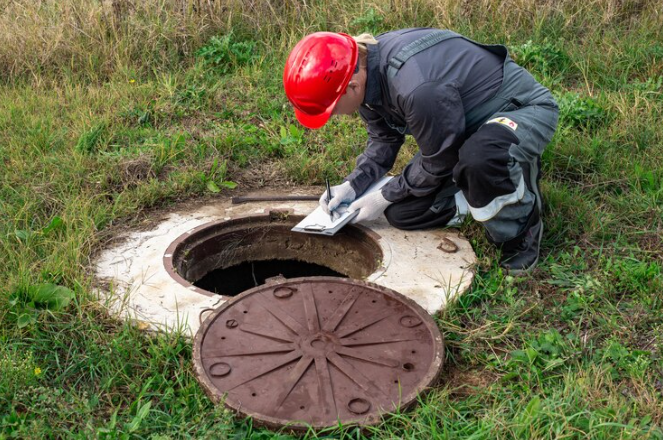Well shocking, also known as well disinfection or chlorination, is an effective process for removing or reducing various contaminants present in well water. The process targets harmful bacteria, viruses, protozoa, and parasites, ensuring the water’s safety for consumption. Additionally, well-shocking can help address issues related to algae, biofilm, organic matter, and bacteria that cause foul odors and taste in the water. When done correctly, well shocking can eliminate or significantly reduce the following types of contaminants:
Why Shock Your Well?
Shocking your well is essential for maintaining the overall health and safety of your water supply. Think of it as a thorough cleanse for your well, similar to the deep cleaning you would give your home. Over time, your well can accumulate bacteria and other organisms that can negatively affect the water’s quality and safety. This is where well shocking comes in. It’s a proactive measure that aids in the prevention of waterborne diseases, ensuring your well water remains safe for use.
When to Shock Your Well?
Well shocking should be done periodically, but the exact frequency depends on your water testing results and any noticeable changes in water quality, such as color, odor, or taste. Typically, it is recommended to shock your well annually as part of routine maintenance. However, it’s also crucial to perform well shocking immediately after any incidences that might introduce contaminants into your well, such as flooding or servicing work. Always remember to test your water after shocking to ensure all harmful contaminants are effectively removed.
Well Shocking Contaminants Removal
-
 Bacteria: Bacteria are one of the most common contaminants found in well water. Coliform bacteria, including E. coli, are often used as indicators of water contamination, as they can be present in feces and other organic matter. Well shocking, typically with chlorine bleach, effectively disinfects the water, killing harmful bacteria and reducing the risk of waterborne illnesses.
Bacteria: Bacteria are one of the most common contaminants found in well water. Coliform bacteria, including E. coli, are often used as indicators of water contamination, as they can be present in feces and other organic matter. Well shocking, typically with chlorine bleach, effectively disinfects the water, killing harmful bacteria and reducing the risk of waterborne illnesses. - Viruses: While viruses are less common in well water compared to bacteria, they can still be a concern in certain situations. Well shocking can also help inactivate certain viruses that might be present in the water. Viruses can cause gastrointestinal and other illnesses, making it essential to address their presence if detected.
- Protozoa and Parasites: Some well disinfection processes, such as shock chlorination, can target protozoa and parasites that might be present in the well water. Examples of common waterborne protozoa include Giardia and Cryptosporidium, which can cause gastrointestinal illnesses.
- Algae and Biofilm: Algae growth and the formation of biofilm can occur inside the well due to the presence of nutrients and sunlight exposure. Well shocking can help disrupt and remove algae and biofilm, preventing their growth and ensuring cleaner well water. Algae and biofilm can contribute to taste and odor issues in the water and may harbor bacteria and other microorganisms.
- Organic Matter and Odors: Chlorine, the disinfectant commonly used in well shocking, can help break down and remove organic matter present in the water. Organic matter can originate from decaying leaves, plants, and other organic materials. By addressing this matter, well shocking can improve the taste and odor of the water.
- Iron Bacteria and Sulfur Bacteria: Iron bacteria and sulfur bacteria are types of bacteria that thrive in well water with high iron or sulfur content. These bacteria can cause slime formation, foul odors, and discoloration in the water. Shock chlorination can help reduce the population of these bacteria, improving the water’s appearance and smell.
The right amount of chlorine to use for water well chlorination depends on several factors, including the well’s depth, diameter, and the severity of bacterial contamination. The goal is to use enough chlorine to effectively disinfect the well and eliminate harmful bacteria, while avoiding using excessive amounts that could lead to residual chlorine in the water, causing taste and odor issues.As a general guideline, the recommended dosage for shock chlorination of water wells is typically around 50 to 200 parts per million (ppm) of chlorine. However, it is essential to consult with your local health department or a certified well contractor for specific guidelines tailored to your well’s characteristics and the water quality concerns.
Water Well Chlorination Process
The well chlorination process involves diluting chlorine bleach (sodium hypochlorite) with water to create the disinfectant solution. The concentration of chlorine bleach used for well chlorination should be around 5.25% to 6% sodium hypochlorite, without any additives, fragrances, or thickeners.
Regular Water Well Chlorination
Here are the general steps to calculate the right amount of chlorine for well chlorination:
- Measure the depth of your well and its diameter.
- Determine the volume of water in the well by using the formula for calculating the volume of a cylinder: Volume = π * (r^2) * h, where “r” is the radius (half of the diameter) and “h” is the depth.
- Calculate the total amount of chlorine needed based on the desired concentration (usually in ppm) and the well’s water volume.
- Mix the chlorine bleach with clean water in a separate container to create the disinfectant solution. Follow the guidelines for the appropriate concentration.
- Pour the disinfectant solution into the well, ensuring that it reaches all parts of the well.
- Circulate the disinfectant solution through the well system by running the water through faucets and fixtures connected to the well.
- Allow the disinfectant to sit in the well for the recommended contact time, typically 12 to 24 hours.
- After the contact time, flush the well system thoroughly to remove the chlorine and any residual contaminants.
Remember, well chlorination should be conducted following the guidelines provided by your local health department or a certified well professional to ensure safe and effective disinfection. Using the right amount of chlorine and following proper safety measures during the chlorination process is crucial for maintaining a clean and safe water supply from your well.Regular well shocking, combined with proper well maintenance and water testing, is crucial for maintaining a safe and reliable water supply from your well. By staying proactive in addressing water quality concerns, you can ensure that your well water remains clean, refreshing, and free from harmful contaminants.


